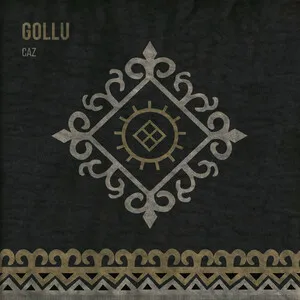Karachay-Balkarian music is the traditional and contemporary musical culture of the Karachay and Balkar peoples, two closely related Kipchak‑Turkic groups native to the North Caucasus.
The style blends epic narrative songs, lyrical ballads, and energetic social dance tunes. It features modal melodies with ornamented, melismatic vocal lines; heterophonic textures in ensembles; and driving dance rhythms. Typical instruments include the garmon (button accordion), zurna (shawm) with dhol/doli (double-headed drum) for outdoor festivity and dance, and plucked lutes of the pandur/panduri family common across the Caucasus. Songs are performed in the Karachay‑Balkar language as well as Russian in modern contexts.
Themes range from heroism and local history to love, weddings, pastoral life in the highlands, and the collective memory of exile and return, giving the music both celebratory and poignant emotional colors.
Karachay-Balkarian music has deep roots in the North Caucasus, where epic storytelling, pastoral song, and communal dance long accompanied daily life and seasonal rituals. Epic and historical songs were carried by bard-like singers, while weddings and village gatherings favored vigorous circle and line dances supported by loud outdoor instruments such as zurna and drums.
In the late 19th and early 20th centuries, scholars and ethnographers working in the Russian Empire began documenting local repertoires. Early recordings and transcriptions captured heterophonic vocal practice, modal melodies, and the growing presence of the garmon (button accordion), which became a cornerstone of dance music in the region.
Under Soviet cultural policy (1930s–1980s), folk traditions were collected, arranged, and staged. State-supported ensembles codified Karachay-Balkarian repertoire for choir, dance troupe, and folk orchestra, emphasizing precision, sectional arrangements, and polished stage presentation. This period also introduced professional training and broadcasting, which helped standardize certain dance rhythms and melodic turns while preserving distinctive language and tune-types.
A traumatic chapter was the 1943–1957 deportation of Karachays and Balkars to Central Asia. Music became a vehicle of memory, resilience, and identity in exile, and songs recalling the mountains and homeland entered the shared repertoire upon repatriation.
After the 1990s, local ensembles, community festivals, and media renewed interest in traditional dance tunes, epic songs, and wedding repertoires. Contemporary artists combine garmon-led dance grooves and traditional vocal ornaments with pop arrangements, electronic textures, or rock instrumentation. Today the genre lives both in community celebrations (where zurna and drum still dominate outdoor dancing) and on modern stages and recordings that emphasize heritage alongside innovation.




